- Fujifilm Instax SQ6 Review, best instant camera for travel?
- Instant cameras compared, travel photographer’s view
- Never Travel Without An Instant Camera! (Instant cameras review)
In the Instant camera world, I think this one is the best value! The camera has been my travel companion for almost a year, and I think it is a great time to make a comprehensive, full-scale review. You will find out about the value it can add to your travel photography and all the truth about how well it performs. This is my Fujifilm Instax SQ6 review!
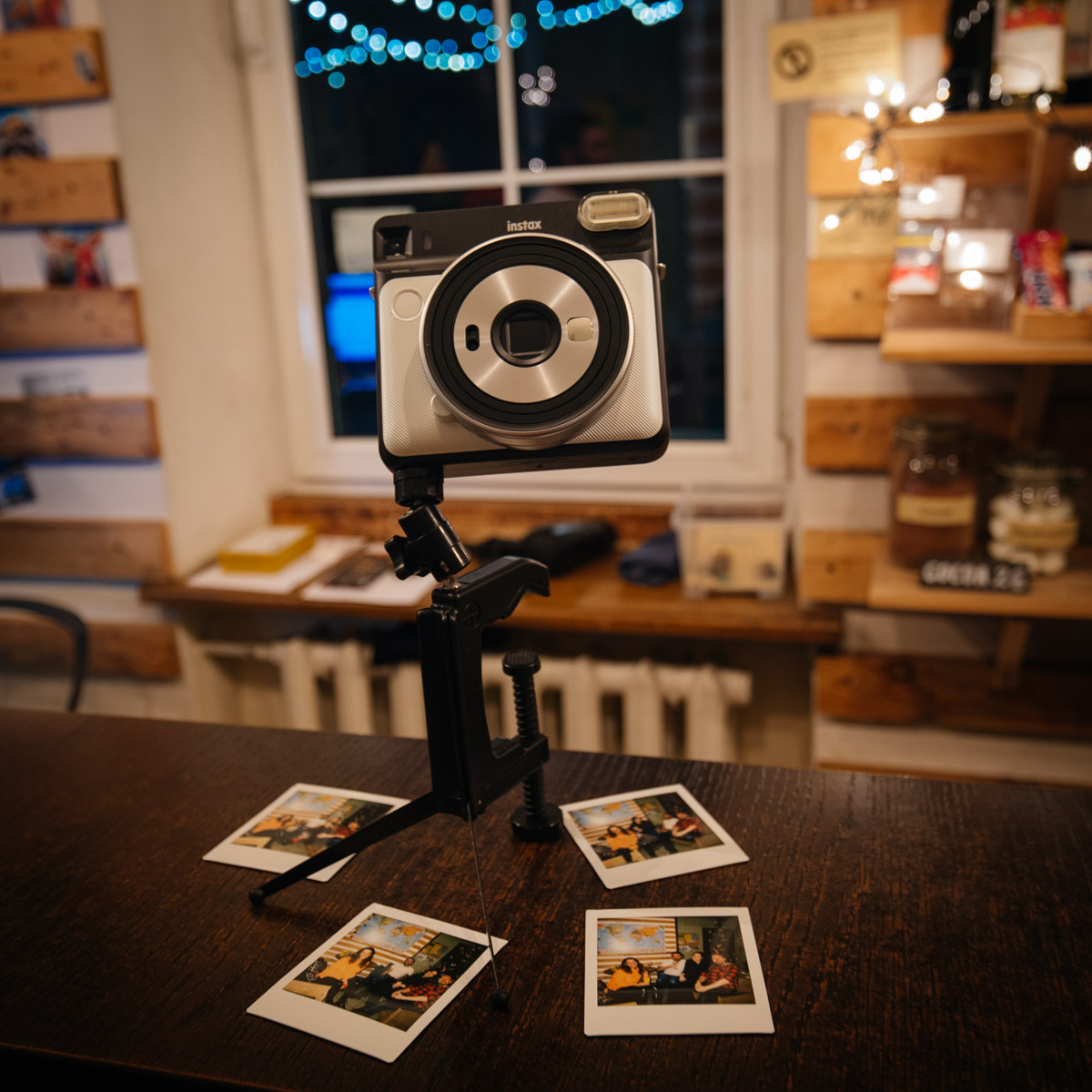
Instax SQ6 has a lovely, engaging design, and it produces beautiful prints. That’s what you get this camera for. But there is a lot in between, the actual process of taking a picture is kinda special. So let’s talk.
Disclaimer. I bought the camera with my own money. I am not sponsored by Fuji. The post contains affiliate links at the very end. Buying from those doesn’t cost you extra, but I get a small % from the sale.
I have split the review into two main parts. First about body and design, second about the process of making the shot.

Table of Contents
Why Fujifilm Instax SQ6 for travel?
If I ask myself why, I think a combination of things: retro design, Fujifilm colors, compact size, and good amount functions make it a perfect travel companion. I like giving instant prints to people who helped me during the trip. And because I mostly work with people, design plays a huge role.

Another thing I like – Fujifilm Instax SQ6 is a true analog camera. The fact that there is always a single copy of the print significantly increases print’s value.
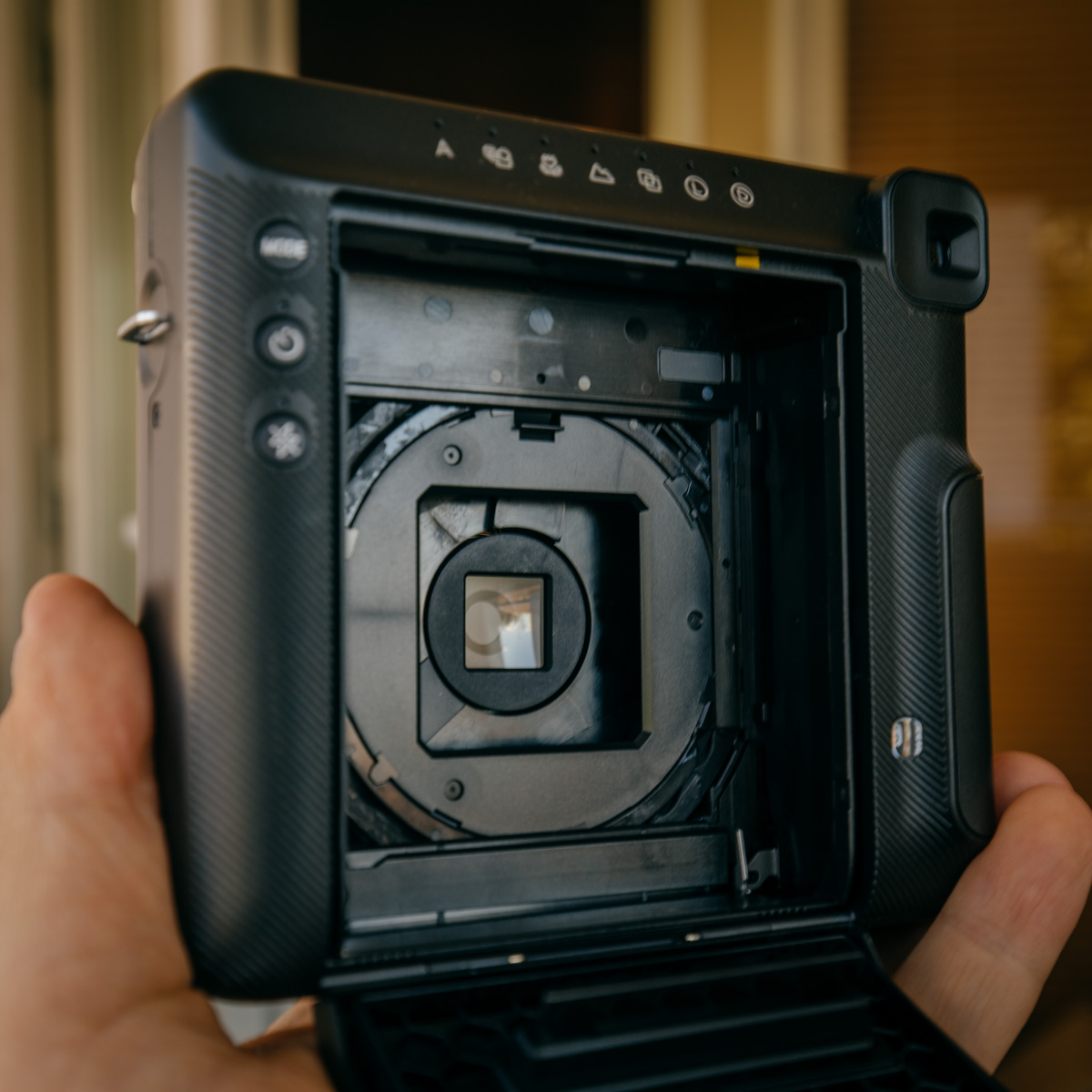
There are many other instant cameras, and some of those “instant” cameras that are digital, they allow you to preview image. While they help you to avoid wasting shots, I don’t think the instant film is the best “paper” for printing. You can use a compact printer zink paper printer for that.
About design and Instax square film
Fuji has put a lot of effort into design and film’s color science. That’s the visible part that they have in all their ads, and it does look lovely. Let’s break everything into details.
Design
Fuji Instax SQ6’s body is retro-styled, which corresponds very well with the film era. The era when instant photography was mainstream. It reminds old film cameras and looks very similar to the old Instagram logo.
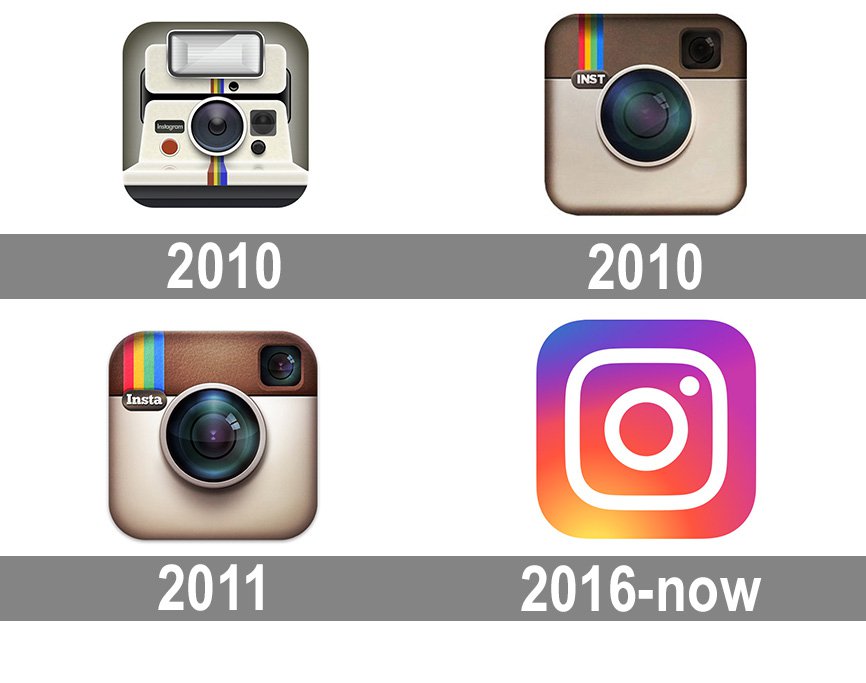
For me, the most important thing about the camera is how people react. As soon as I take the camera out of your bag, they curiously look at it asking: What kind of camera is that? Afterward, people are usually more than happy to pose for a picture.
So, in summary. For a travel photographer like me, who likes to engage with people, the SQ6’s design would play a significant role.
Ergonomics
Many bloggers mention the camera’s ergonomics. They tell it isn’t perfect. I would like to say that it does not matter! When you take thousands of shots and use heavy lenses – than ergonomics are significant. But not for a camera with a 10-shots cartridge!
Overall, I think the size is almost perfect. It is almost similar to the popular Instax Mini 9. But it shoots in a larger format. And, unlike Polaroids, the shape of the camera is practical. It would fit into most of the bags.
Size and weight are: 8.7 x 128.1 x 58.1mm and 393g.
Build
Let’s see how this beautiful thing would survive a trip. Fujifilm Instax SQ6 is made of plastic, but overall it feels durable.
The only thing that looks a bit fragile is the lens’s focus mechanism, especially when expanded. There is a thin piece of a metal sheet on the front of the lens. It is only for decorative purposes and can bend* pretty easily.
*This actually happened to me. I have no idea what managed to hit my bag with such a strength, but there was a slight bend on this sheet. The camera didn’t focus anymore. I took the sheet away, straightened, and glued back. Happily, everything worked afterward.

It worth noting that the camera is not weather sealed.
Considering the things mentioned, I would highly recommend having a case for the camera. It will protect the lens and will add some protection from the rain. (Link at the end of the post)
Instant square film
Out of Instant films, this is my favorite. I love Fujifilm colors! They have been producing film since 1934 and implement their experience in modern Instant cameras. The film has classic colors and a soft, slightly desaturated look. I find them not well suited for landscapes, but outstanding for portraits.
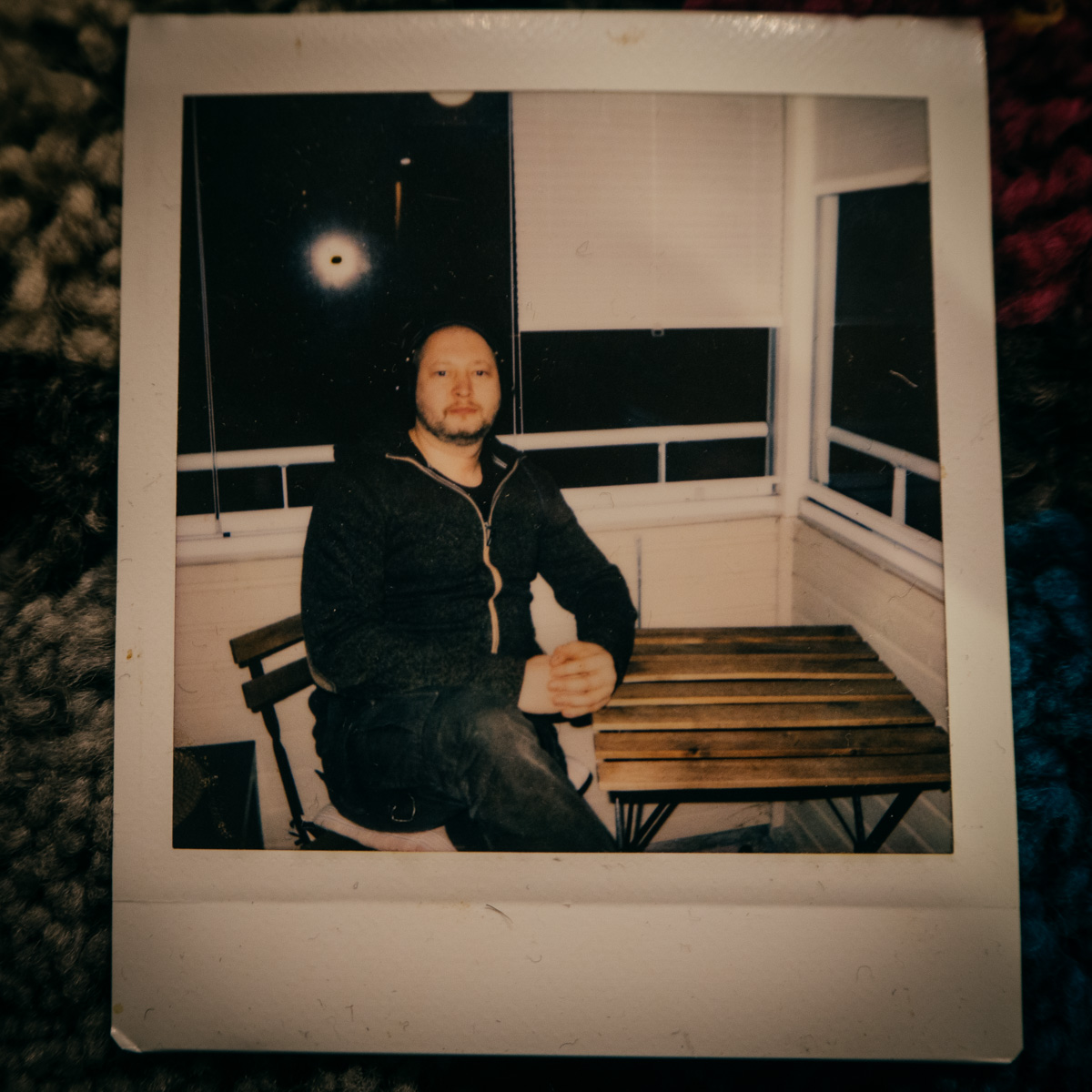
Instax square film is slightly smaller than Polaroid but costs 2 times less, and unlike Instax mini, sizable to make out details. The size of the actual image area is 62x62mm, the whole print is 86x72mm. For comparison, the image area of Polaroid is 78.9×76.8mm and 46x62mm of Instax mini.
Sharpness. Can it be sharper? I guess yes, but I think for instant film sharpness doesn’t matter. No one is going to take a magnifier and knit-pick the image (except for gear reviewers).
Taking a picture
Now let’s dive to all the necessary details to make you take successful shots with Instax SQ6. First, it is important to know, that at the very beginning, you will fail and waste some shots. Same as any other analog camera. With this instruction though, I hope you will minimize wasted shots.
Framing
To frame a picture, you use a viewfinder. The focal length is around 32mm in full-frame equivalent. It is necessary to understand that what you see isn’t exactly what you will get. The viewfinder is at the far corner of the camera. The lens is slightly away from the center, closer to the opposite side. After framing the shot, move the camera a little to the right.
The most significant problem is in macro mode. I would recommend framing your shot, and then just look onto the lens and make sure that it is facing the object. For other shots, I would recommend to frame the shot and then move the camera to the right a little.
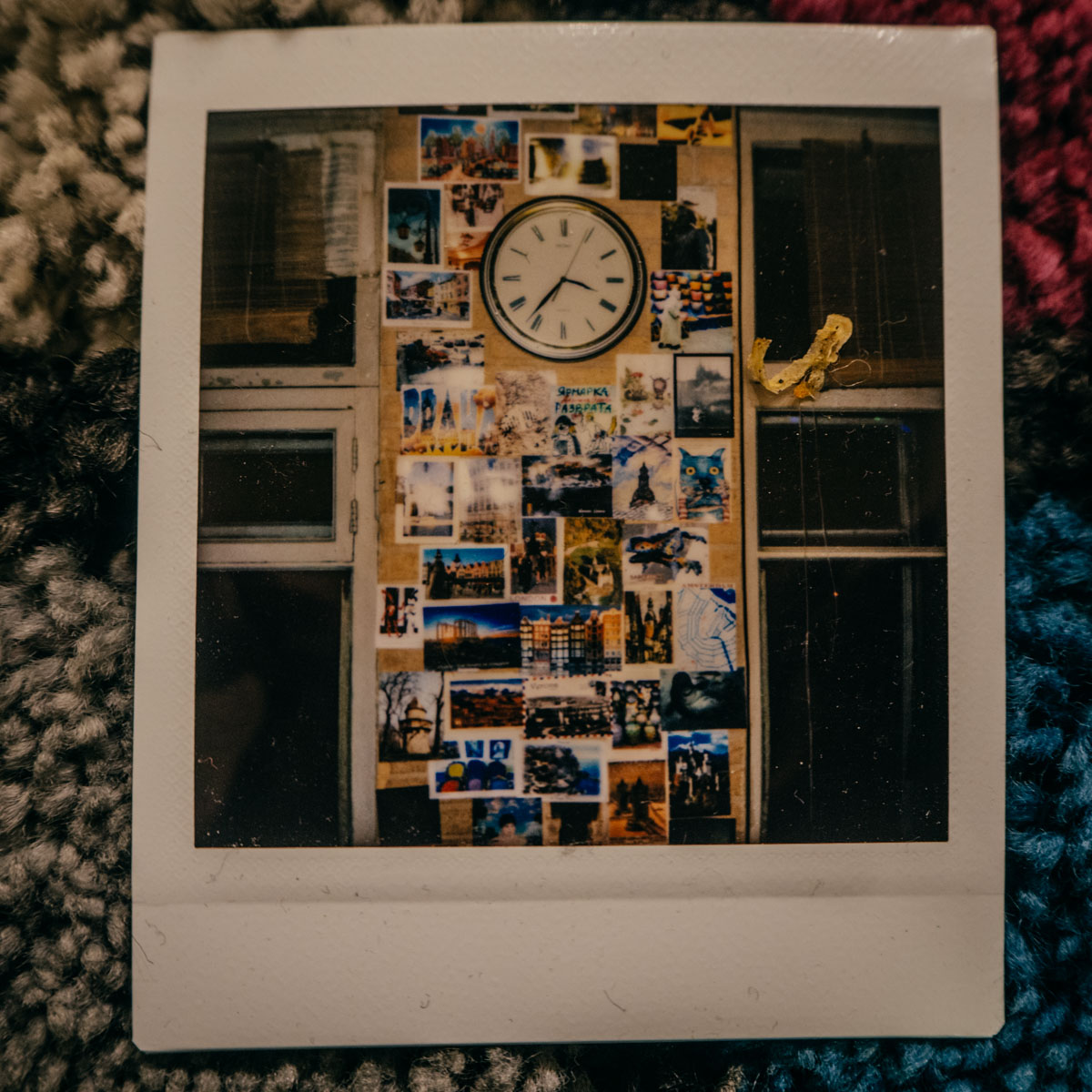
This issue makes it hard to position objects at the edges of the frame. So I don’t recommend it. Leave some space.
For selfies, there is a mirror right on the lens, so you don’t have the same problem as with viewfinder. It is pretty easy to fit 2-3 people, but for more, the mirror is too small. To shoot group portraits, I install the camera on a mini-tripod and use a 10-second self-timer.
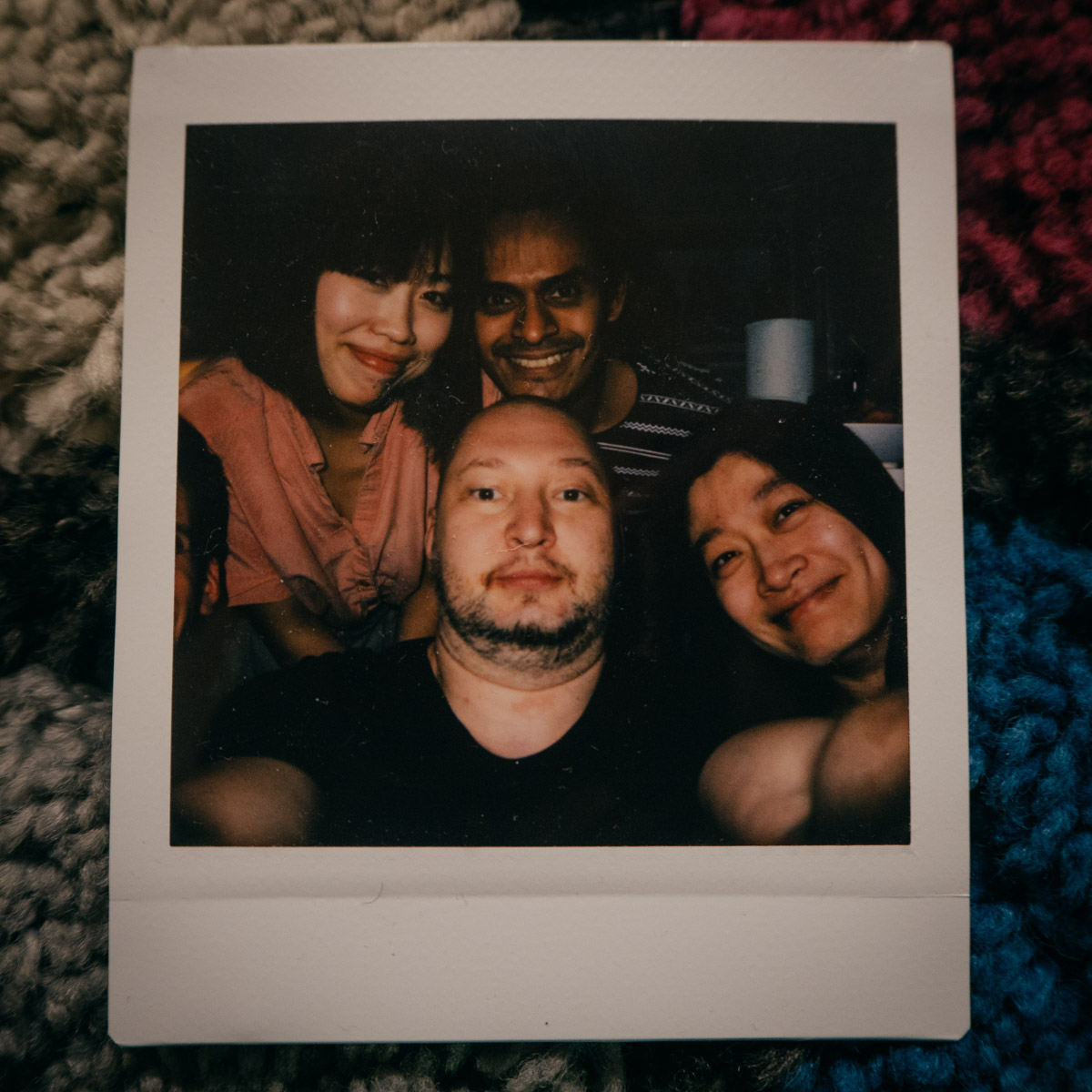
Focusing
Focus on Fujifilm Instax SQ6 is defined by one of the modes: macro/selfie, normal, landscape. They will zone-focus in pre-defined ranges: 0.3-0.5m, 0.5-2m, 2m-infinity. I normally set the range after I frame the shot (when I know the distance).
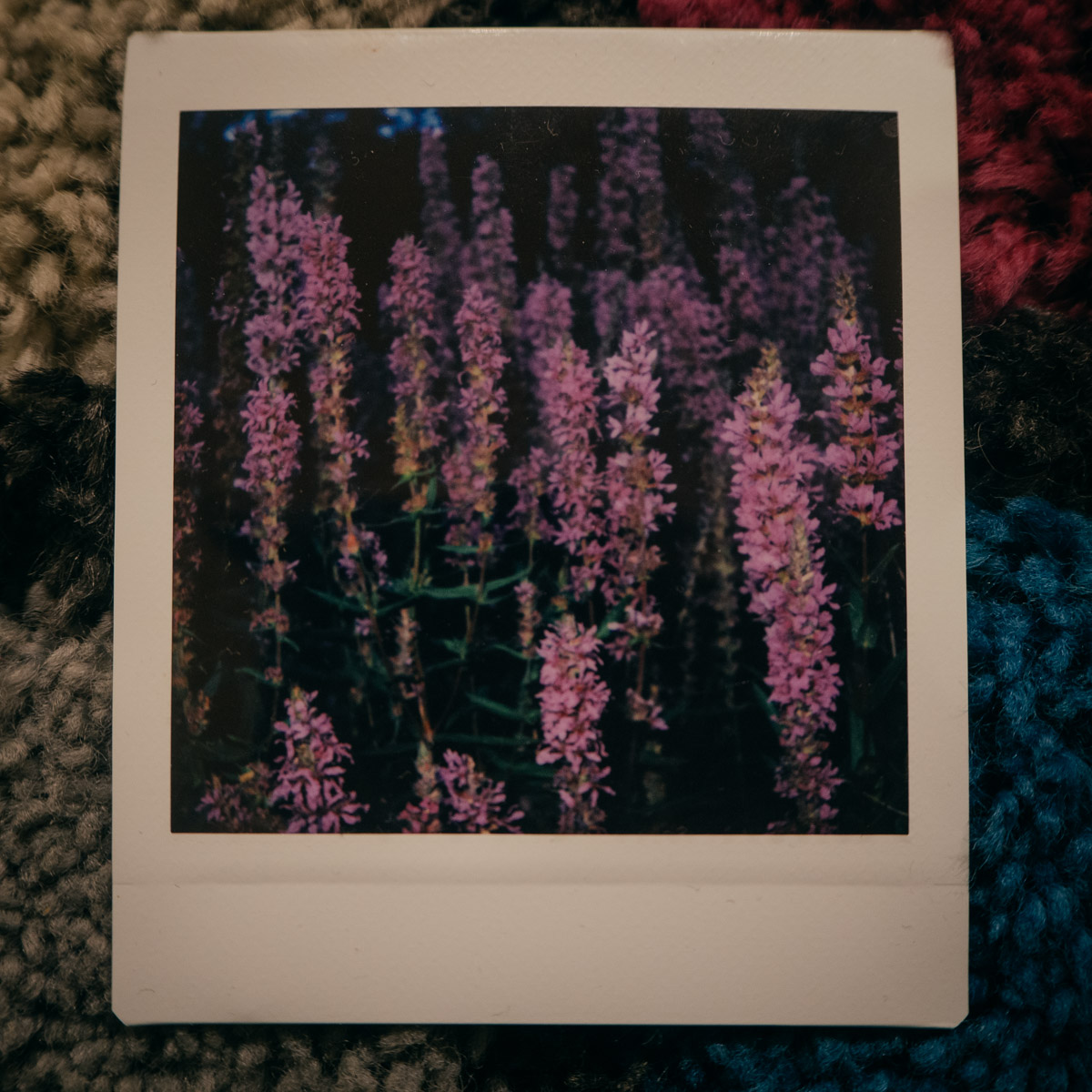
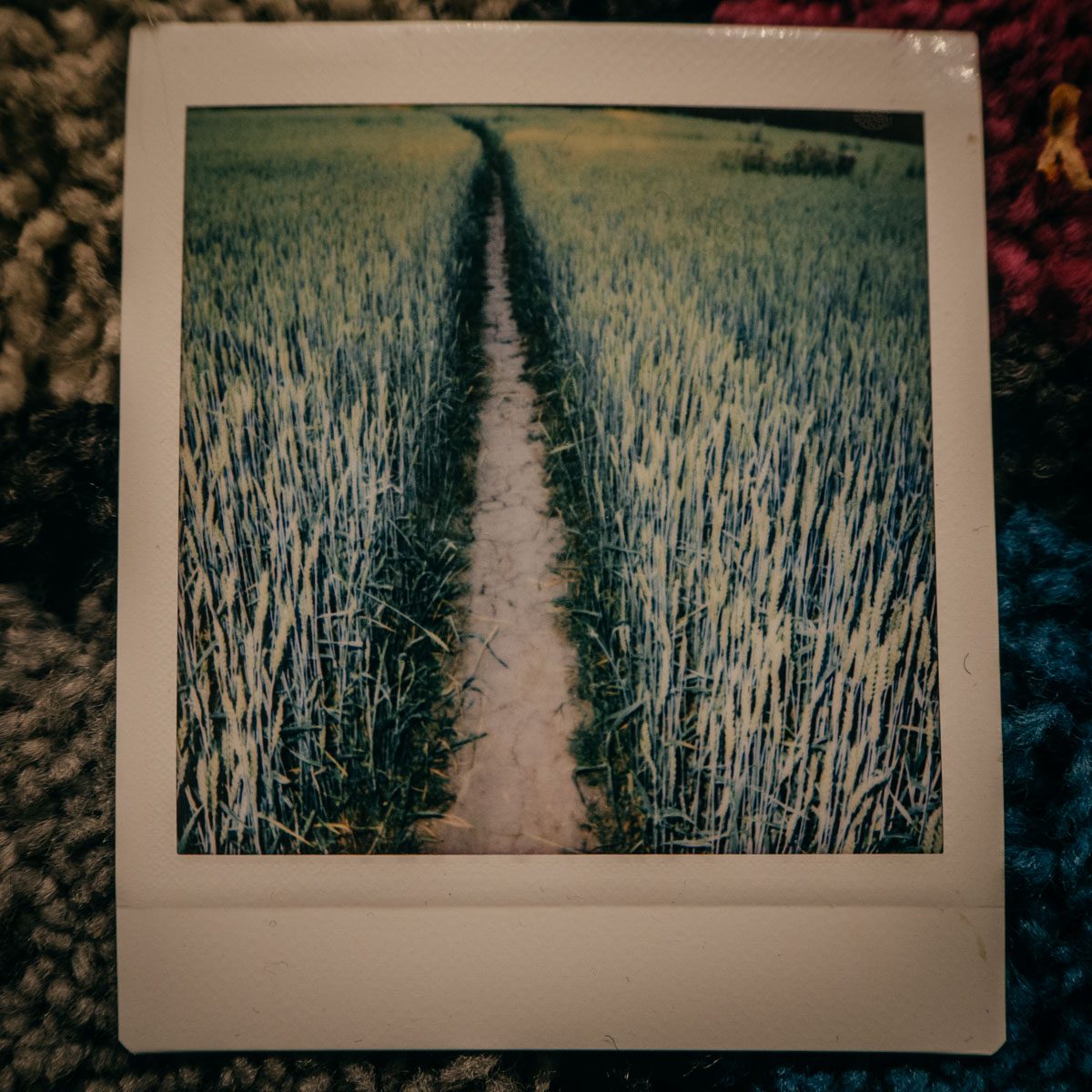
I think the common mistake people make – shooting landscapes in Normal mode. This makes the areas 2+ meters out of focus. I assume people confuse Normal mode with Auto. Be careful here.
Flash
By default, the camera fires a flash. If you are just starting up, I would actually recommend using it. For me, the success rate is around 95% with a flash, and around 75% (after practice) with flash suppressed.
It seems that instant cameras were initially designed to work with flash, and the no-flash mode was added later. The basic Instax Mini cameras actually don’t allow disabling the flash. Normally, photographers criticize the use of on-camera flash, but I think it is a part of instant photography.
Here are some recommendations:
- Power of the flash is set according to the mode, it is least powerful if macro/selfie modes
- If you shoot in normal mode, you shouldn’t have objects at the macro distance, the flash will overexpose them

- The effective flash range is listed as 0.3-2.7 meters, but indoors, I have shot across the room over 3 meters

- In low light and indoors, always use flash
- Avoid objects in the frame, that can reflect the flash (mirrors, etc)
- When shooting landscapes – turn flash off (I mean landscapes that need infinity focus)
Metering and flash off
On Fuji Instax SQ6, ISO and aperture are pre-set, shutter speed is on auto. The camera figures out the shutter speed based on the amount of light that hits the light meter. It is located on the front of the lens.
With flash, the camera creates the needed amount of light itself, so it works fine in most of the cases. Understanding metering matters the most if you take a picture without a flash.
Modern cameras do everything for you. Phones focus on the face and define the settings to expose it correctly. In most of the DSLRs, you have spot-metering, and it exposes things you focus on. Unfortunately, in instant cameras metering is very basic.
The only controls you have are Lighten and Darken modes. They do + or -2/3 EV. But there is an annoying limitation here as well. They work in Normal mode only (0.5-2m). Not in macro or landscape.
Here are the things I recommend you to keep in mind:
- If in doubt – skip it. For instance, half of the scene is in bright lights and a half in deep shadows. It is hard to predict which area it would expose correctly
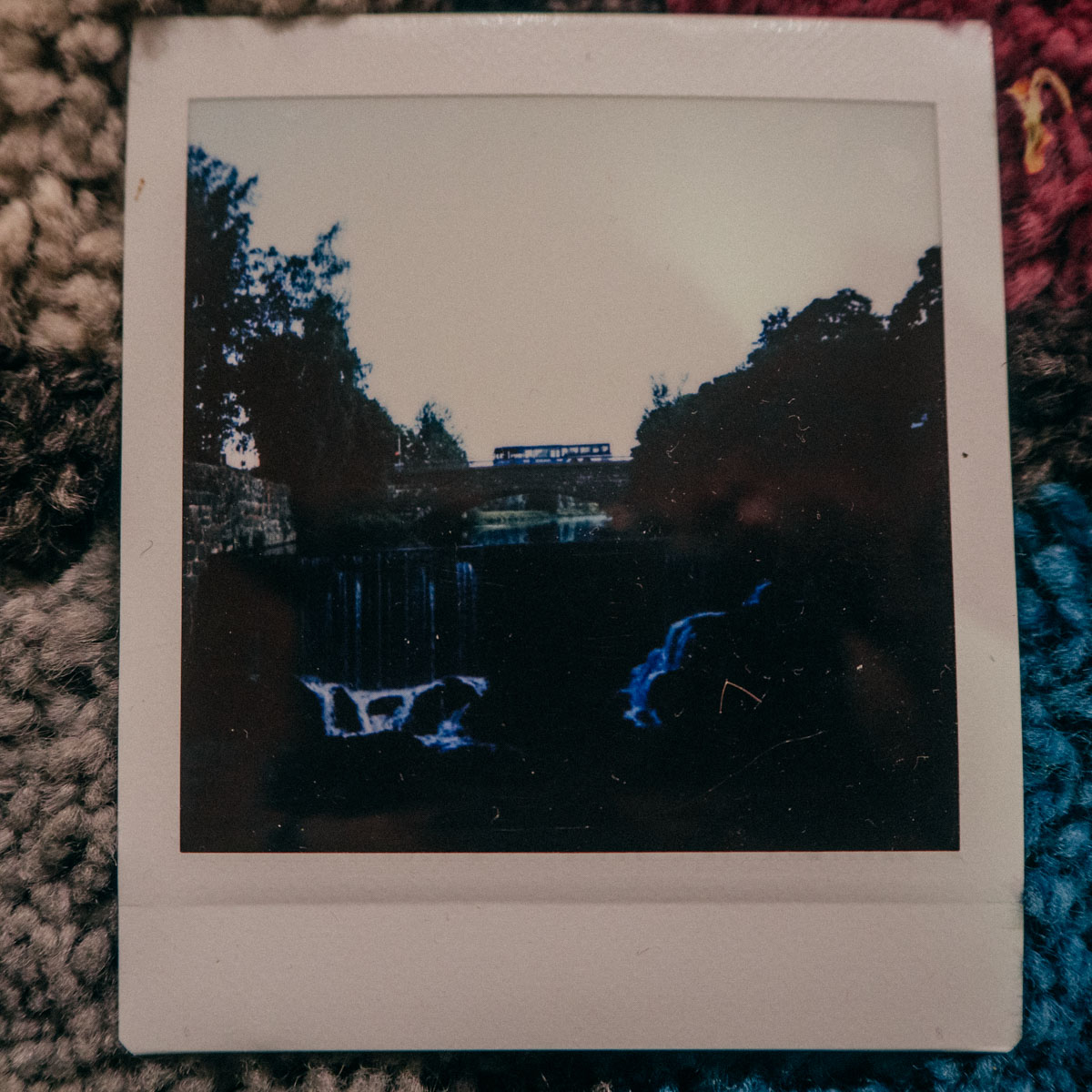
- For back-lit environmental portraits, use Lighten mode. By default, the camera will try to adapt to the bright environment, leaving the subject in the dark.
- Don’t take pictures outside on a very bright sunny day. They mostly end up overexposed. I guess it hits the limitation of 1/400 shutter speed.
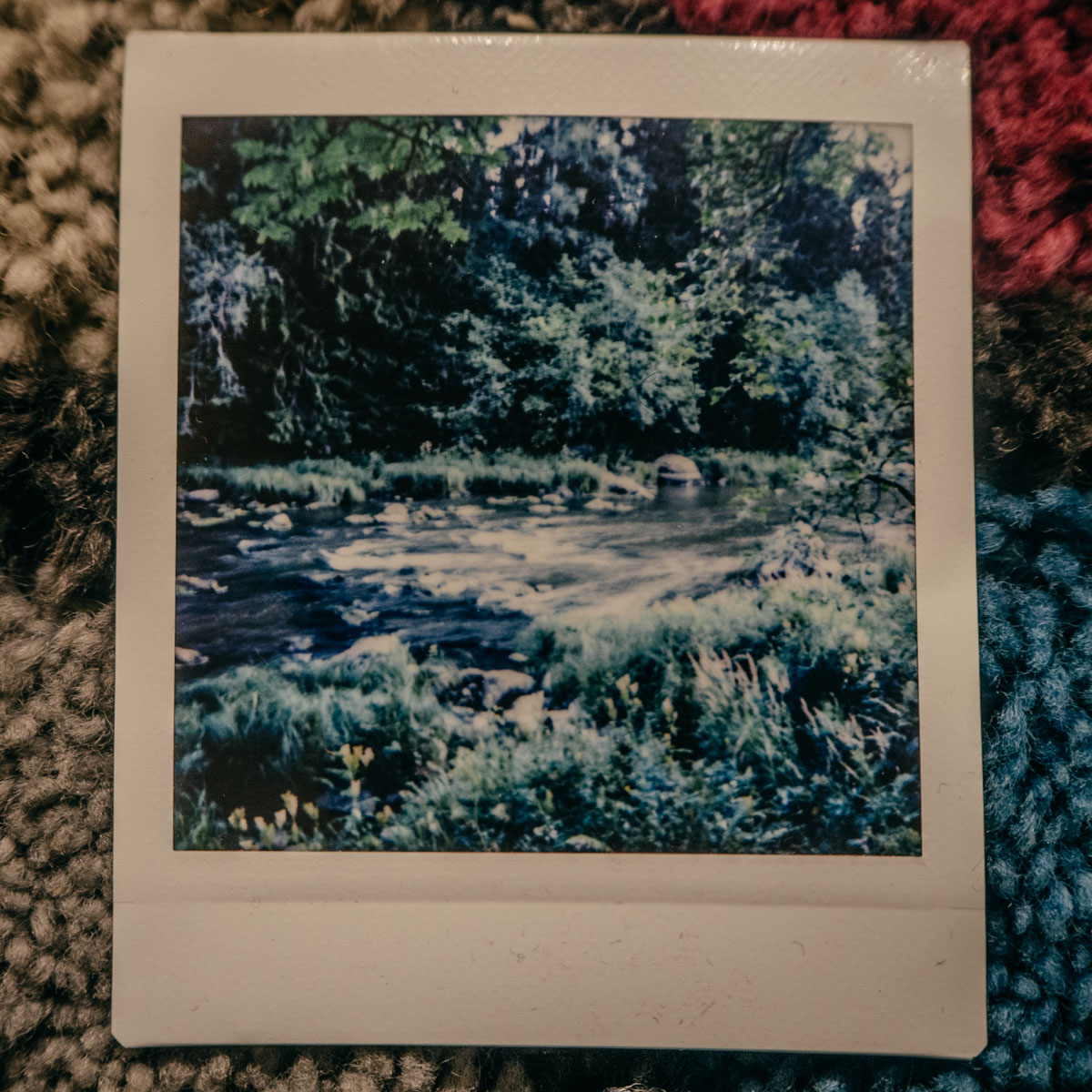
Other things briefly
Everything here is insignificant, but nice to know.
Double exposure
To be honest, I am not a fan of double exposure. I value instant images because they capture a single moment and make only one copy. Doble exposure just doesn’t look real. It is interesting as a form of art. But since it is art (which doesn’t necessarily show reality), I am thinking of regular cameras and Photoshop, not Instant.
Color filters
Together with Instax SQ6, you get red, green and pink color on-flash filters. Since I bought the camera, I never took them out of the box. Why would you use them?! The original Fuji colors are outstanding. I can imagine myself using a yellow filter when I shoot under yellow artificial light, but they don’t supply yellow color.
Tripod
The Tripod socket is not in the center but in the corner of the camera. So expect some minor balance issues when you use a mini-mini-tripod.
Battery
The camera takes two CR2 batteries. They are supplied with a camera. Many criticize the camera because it doesn’t’ have rechargeable batteries, but you can use them for very long. I think it is once more a minor issue. (if an issue at all, I don’t wanna carry extra chargers)
Camera strap
I have never taken mine out of the box. If you have another main camera (which I guess you do), 99% of the time the Instax SQ6 would be in your bag. And when you take it out, strap drags out all the content of your bag.
I have listed all of the important specifications. Full specks is available on Fujifilm website.
Summary
Despite all the issues, I think it is a very capable camera. The primary advantages are outstanding design and lovely retro-styled Fujifilm image colors.
The major issues are ineffective metering with the flash off and not centered viewfinder
(I would just mention that other instant cameras have significant issues as well. I don’t have opportunities to compare cameras in detail, but based on the specification and reviews – this is one of the best cameras around.)
But despite these issues, it is a very capable camera. If you shot portraits with a flash – you can get your success rate to 100%.
Affiliate links
Here are the links for purchasing the camera, film and accessories. Buying from those doesn’t cost you extra, but gives me a % from the sale. It helps me running this blog and producing more reviews like this.
Fujifilm Instax SQ6 is available in 5 colors (also special, slightly more expensive Taylor Swift edition). I got mine in white for 100 Eur
Fujifilm Instax SQ6 on EBAY
Fujifilm Instax S6, Taylor Swift edition on EBAY
The film is available with white, black, marble and black starry framing (also, if interested, there is Taylor Swift framing). If you take instant photography seriously, I would recommend purchasing a big bulk pack. The price for a shot will get cheaper.
Instax Square film (all listings) on EBAY
Instax Square film, bulk 100 shots package on EBAY (in search, you can enter other value than 100)
Black framed Instax Square film on EBAY
Marble framed Instax Square film on EBAY
Starry framed Instax Square film on EBAY
Instax Square film, Taylor Swift on EBAY
As I mentioned, I highly recommend getting a leather case. I own a brown leather case, but there are also other options. You may also consider getting an album designed for Instax Square format.
Fujifilm Instax SQ6 leather case on EBAY
Fujifilm Instax SQ6, all cases on EBAY
Instax Square photo album on EBAY
Join my community!
I love working on Engineer on tour, but it is a time-consuming thing to make. I am always improving and trying to bring you the best from photography and travel.
Currently, my main platform is my Facebook Photo Page. I will be happy to see you among my followers’ families and engage in a friendly discussion. Let me know how I’m doing and feel free to suggest some topics to write about.
You can also find me on other social media:
FACEBOOK 2 (blog updates only) / TWITTER / INSTAGRAM / INSTAGRAM 2 (only Finland) / PINTEREST


